Reactivation of chromosomally integrated human herpesvirus-6 by telomeric circle formation
- PMID: 24367281
- PMCID: PMC3868596
- DOI: 10.1371/journal.pgen.1004033
Reactivation of chromosomally integrated human herpesvirus-6 by telomeric circle formation
Abstract
More than 95% of the human population is infected with human herpesvirus-6 (HHV-6) during early childhood and maintains latent HHV-6 genomes either in an extra-chromosomal form or as a chromosomally integrated HHV-6 (ciHHV-6). In addition, approximately 1% of humans are born with an inheritable form of ciHHV-6 integrated into the telomeres of chromosomes. Immunosuppression and stress conditions can reactivate latent HHV-6 replication, which is associated with clinical complications and even death. We have previously shown that Chlamydia trachomatis infection reactivates ciHHV-6 and induces the formation of extra-chromosomal viral DNA in ciHHV-6 cells. Here, we propose a model and provide experimental evidence for the mechanism of ciHHV-6 reactivation. Infection with Chlamydia induced a transient shortening of telomeric ends, which subsequently led to increased telomeric circle (t-circle) formation and incomplete reconstitution of circular viral genomes containing single viral direct repeat (DR). Correspondingly, short t-circles containing parts of the HHV-6 DR were detected in cells from individuals with genetically inherited ciHHV-6. Furthermore, telomere shortening induced in the absence of Chlamydia infection also caused circularization of ciHHV-6, supporting a t-circle based mechanism for ciHHV-6 reactivation.
Conflict of interest statement
The authors have declared that no competing interests exist.
Figures
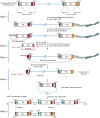

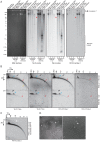
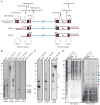
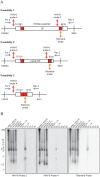
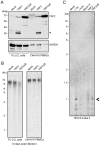
Similar articles
-
Chromosomally Integrated Human Herpesvirus 6: Models of Viral Genome Release from the Telomere and Impacts on Human Health.Viruses. 2017 Jul 12;9(7):184. doi: 10.3390/v9070184. Viruses. 2017. PMID: 28704957 Free PMC article. Review.
-
Inherited Chromosomally Integrated Human Herpesvirus 6 Genomes Are Ancient, Intact, and Potentially Able To Reactivate from Telomeres.J Virol. 2017 Oct 27;91(22):e01137-17. doi: 10.1128/JVI.01137-17. Print 2017 Nov 15. J Virol. 2017. PMID: 28835501 Free PMC article. Clinical Trial.
-
Complete Genome Sequence of Germline Chromosomally Integrated Human Herpesvirus 6A and Analyses Integration Sites Define a New Human Endogenous Virus with Potential to Reactivate as an Emerging Infection.Viruses. 2016 Jan 15;8(1):19. doi: 10.3390/v8010019. Viruses. 2016. PMID: 26784220 Free PMC article.
-
Dual roles for the telomeric repeats in chromosomally integrated human herpesvirus-6.Sci Rep. 2014 Apr 2;4:4559. doi: 10.1038/srep04559. Sci Rep. 2014. PMID: 24691081 Free PMC article.
-
Latency, Integration, and Reactivation of Human Herpesvirus-6.Viruses. 2017 Jul 24;9(7):194. doi: 10.3390/v9070194. Viruses. 2017. PMID: 28737715 Free PMC article. Review.
Cited by
-
Active HHV-6 Infection of Cerebellar Purkinje Cells in Mood Disorders.Front Microbiol. 2018 Aug 21;9:1955. doi: 10.3389/fmicb.2018.01955. eCollection 2018. Front Microbiol. 2018. PMID: 30186267 Free PMC article.
-
The Telomeric Repeats of Human Herpesvirus 6A (HHV-6A) Are Required for Efficient Virus Integration.PLoS Pathog. 2016 May 31;12(5):e1005666. doi: 10.1371/journal.ppat.1005666. eCollection 2016 May. PLoS Pathog. 2016. PMID: 27244446 Free PMC article.
-
Endogenization and excision of human herpesvirus 6 in human genomes.PLoS Genet. 2020 Aug 10;16(8):e1008915. doi: 10.1371/journal.pgen.1008915. eCollection 2020 Aug. PLoS Genet. 2020. PMID: 32776928 Free PMC article.
-
Chlamydia trachomatis and human herpesvirus 6 infections in ovarian cancer-Casual or causal?PLoS Pathog. 2019 Nov 7;15(11):e1008055. doi: 10.1371/journal.ppat.1008055. eCollection 2019 Nov. PLoS Pathog. 2019. PMID: 31697787 Free PMC article. Review. No abstract available.
-
Excision of Integrated Human Herpesvirus 6A Genomes Using CRISPR/Cas9 Technology.Microbiol Spectr. 2023 Mar 16;11(2):e0076423. doi: 10.1128/spectrum.00764-23. Online ahead of print. Microbiol Spectr. 2023. PMID: 36926973 Free PMC article.
References
-
- Tanaka-Taya K, Sashihara J, Kurahashi H, Amo K, Miyagawa H, et al. (2004) Human herpesvirus 6 (HHV-6) is transmitted from parent to child in an integrated form and characterization of cases with chromosomally integrated HHV-6 DNA. J Med Virol 73: 465–473. - PubMed
-
- Daibata M, Taguchi T, Nemoto Y, Taguchi H, Miyoshi I (1999) Inheritance of chromosomally integrated human herpesvirus 6 DNA. Blood 94: 1545. - PubMed
-
- Clark DA (2000) Human herpesvirus 6. Rev Med Virol 10: 155–173. - PubMed
Publication types
MeSH terms
Substances
LinkOut - more resources
Full Text Sources
Other Literature Sources

